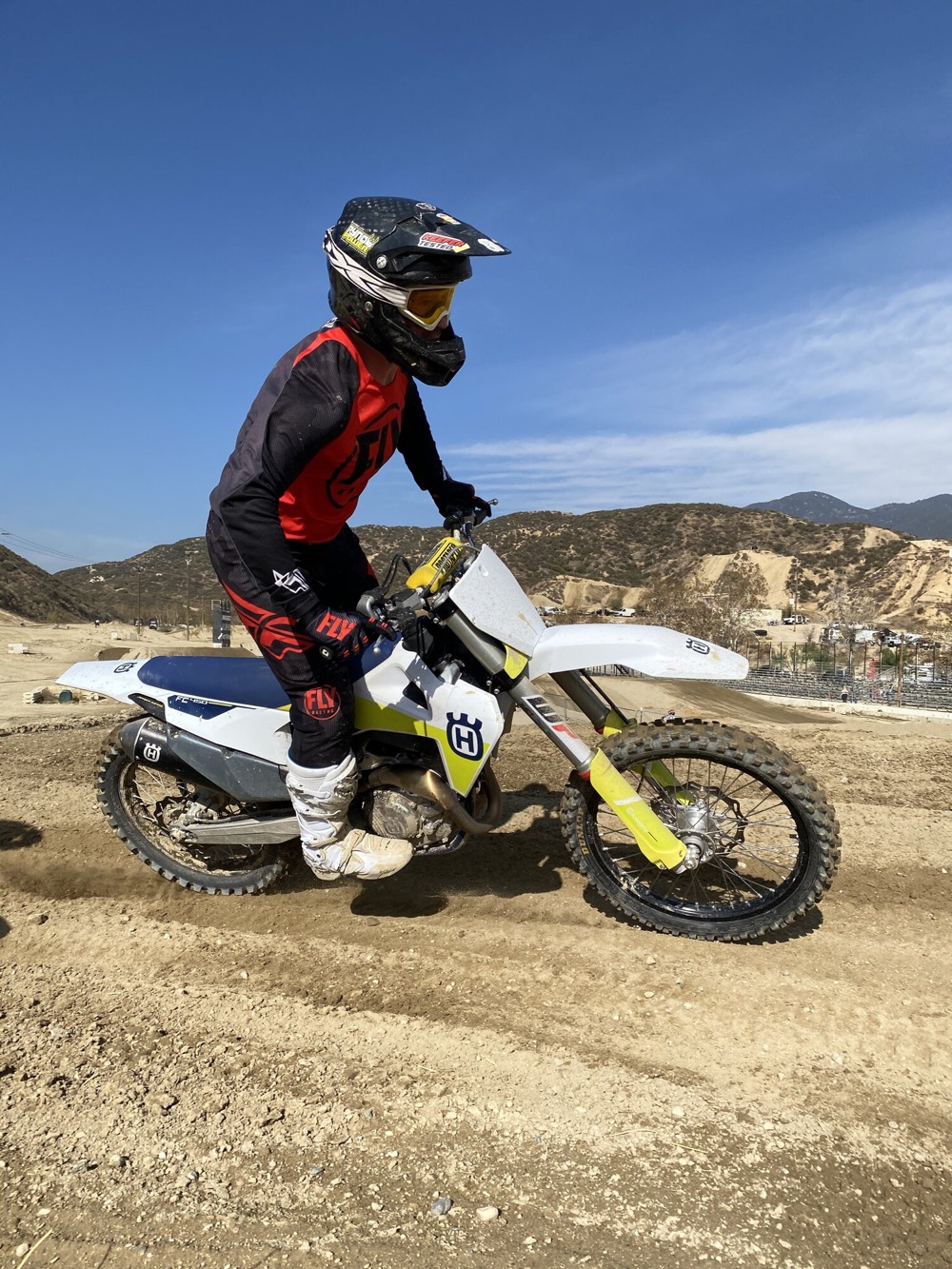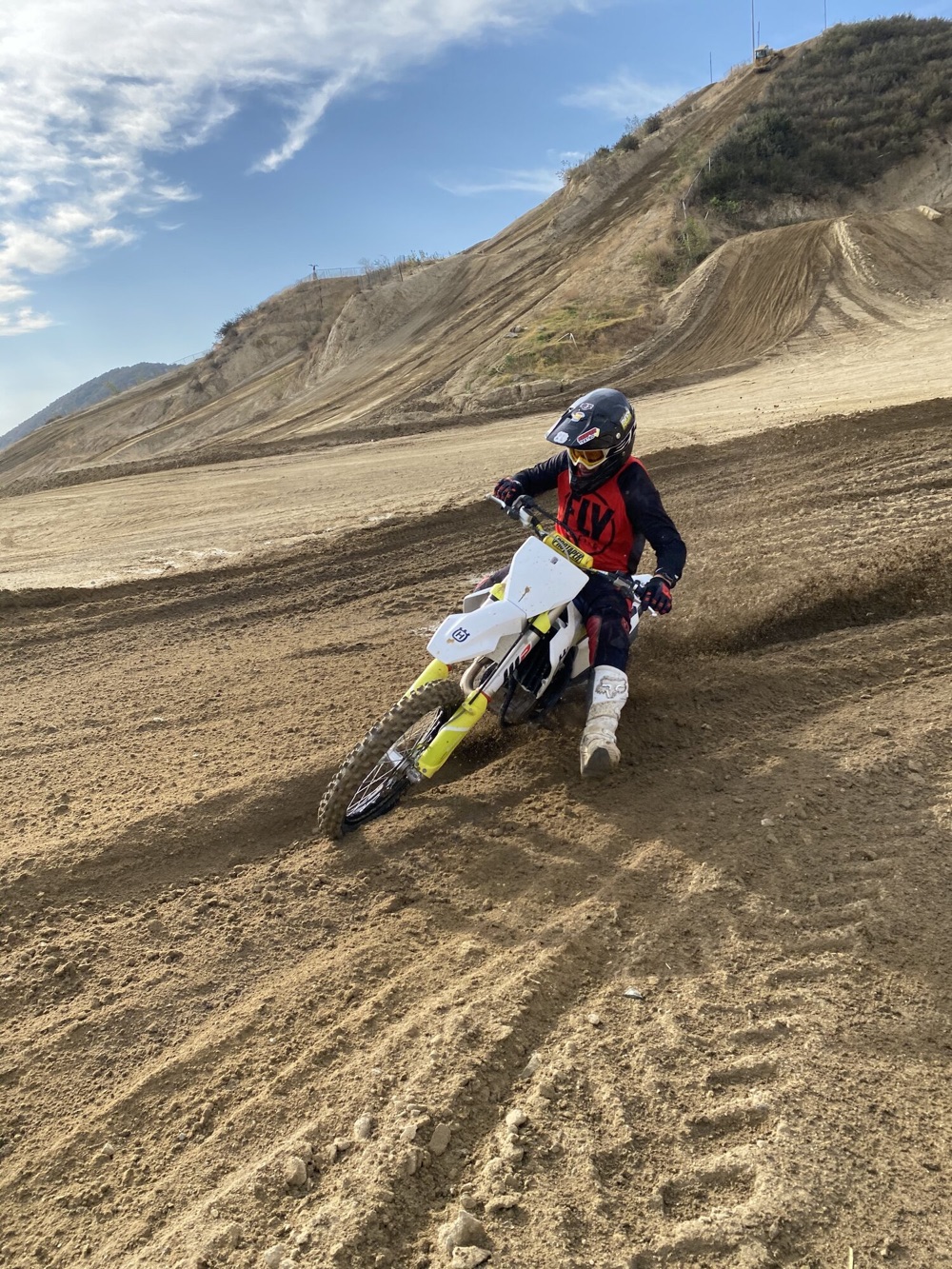Share This Article
By: Joe Oehlhof
So for this year I’ve been tasked with shaking down and dialing in the 2021 FC 450 and I wanted to start by riding it stock for a few hours and finding a direction to focus my time. As enticing as it is to ride a new bike and immediately want to start making changes to suit you, sometimes this can be counter productive, especially if this is a bike with significant changes from the previous year or if its new to you. For me it’s best to ride the bike in stock form, get used to it, become comfortable on it and start finding things you wish were better.
The first couple rides on this bike gave me some areas to focus on and the first area I want to tackle is suspension, but first a quick synopsis of the rest of the bike: The motor was a good mix of power and tractability and the option of 2 different maps gives a little more tunability to mapping for different scenarios, which I will get more into after I dial in the handling and suspension. The rider triangle suited me well and I was comfy right away. The bars, levers, grips, footpegs, brakes, shifter, seat and all the other components that make up the ergos were easy to get used to and I needed little to no adjustment. Lastly, the stock gearing was matched well to the power character of the motor and didn’t have any delayed recovery areas when shifting. Overall a very solid bike in stock form that I’m excited to try and improve on.

Typically stock suspension is a little on the soft side for me with my weight being 190lbs and I’d like to think I’m still able to go somewhat fast for a couple laps. As most of you already know stock bikes are designed to suit a broad spectrum of rider size and ability and if you’re on either end of that spectrum, getting stock suspension to work for you can be a bit difficult. For me the AER fork on the Husqvarna/KTM have come a long way and once you settle on an air pressure, you can fine tune the feel with the compression and rebound clickers. Initially I started with the recommended settings that you cand find on a sticker on the back of the airside fork. I like that Husqvarna did this because it gives you a starting point and as we get older sometimes we forget what the stock settings are. The recommended settings were 10.7 bar or 155psi of air in the fork, compression at 12 out and rebound at 18 out. This setting was, as suspected, too soft for my liking and after testing at State Fair and Glen Helen I found a base line setting of 11.1 bar or 162 psi of air, compression at 10 clicks out and rebound of 18 out. With this I had no issues bottoming on hard landings as well as bump absorption/hold up/traction were very good even at GH late in the day.
The shock was a bit more difficult to find a great setting for, but that is due to my weight of 190lbs and needing a stiffer spring. The action of the shock wasn’t bad, my issue was with a spring that was too soft. The shock was riding too low in the stroke which caused a low squat in the apex of turns and a soft blow thru feeling on transitions, whoops, and hard landings. As I said this is easily fixed with a stiffer spring but when striving for a stock base line setting you do the best with what you have. I ended up going with 98mm of sag, high speed compression at 1/2 turn out, low speed compression at 8 out and rebound at 12 out. Now some of you may ask why I didn’t go further in on compression and I did try that, but the action on acceleration chop/braking bumps suffered when things are closed off that much. The soft feeling on landings, whoops and turns was more manageable than the instability in choppy acceleration bumps or entering braking bumps at speed. Not the ideal trade off, but again if you have to make do until you get the correct spring rates or a revalve, these settings should work for you. At the end of the day this base line set up allowed me to get more comfortable at speed and gave me a direction of the areas I want to improve.

Lastly, I have been asked a couple times if I noticed the bike feeling lower since this bike has been lowered 10mm from the factory. For me the bike does feel more compact, not necessarily small or low, but I’m able to move around easily on this bike and not feel out of position. The only time the bike felt low was in deep ruts. I noticed feeling the frame hit the sides of the rut, but this could also be due to the soft spring. Its definitely an issue that can be sorted out fairly quickly. I am excited to keep working with each area of this bike and I’ll keep you guys up to date on the changes I make. Stay tuned
